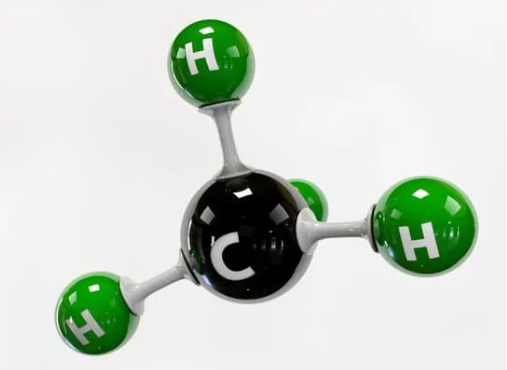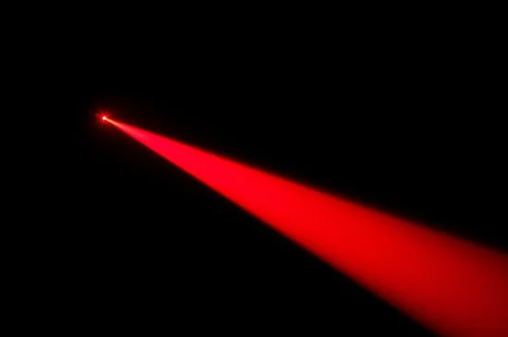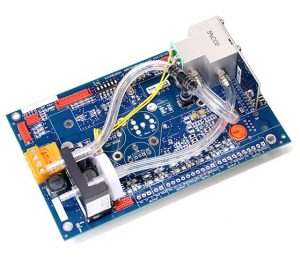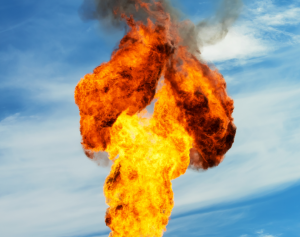Why Use An Infrared Sensor?
This article explains why infrared sensors (IR sensor) are the preferred option for methane detection, as methane detectors are essential for monitoring safety and efficiency in a wide range of applications.
Gas detectors that can detect and quantify industrial and environmental gases like carbon monoxide, carbon dioxide, and methane play a vital role in ensuring the safety and efficiency of a wide variety of processes and applications. As recently as 30 years ago, miners were still using canaries to warn them of high levels of carbon monoxide or methane present in the mine. Thankfully, sensor technology has now moved on, and there are an ever-increasing number of options available for gas detection.1,2
IR Sensing To Detect Leaks and Monitor Methane Concentrations
Natural gas, which mainly consists of methane, is widely used in power generation. However, methane is a greenhouse gas, extremely flammable, and can form explosive mixtures in air. Methane leaks can have devastating results, so detecting leaks is vital during natural gas extraction, transportation, and power generation.2-4

In the chemical industry, production of syngas, methanol, acetic acid and other commodity chemicals depend on methane gas sensors, including infrared gas sensors, to ensure that processes are operating safely and efficiently. Measuring atmospheric levels of methane is also becoming increasingly important for monitoring changing environmental conditions that may affect the environment and human health.2-4
Commercially Available Gas Detection Technologies
There are a wide range of commercially available methane gas detectors and sensors, all with their own advantages and disadvantages:
- Flame Ionized Detectors (FIDs)
FIDs use a hydrogen flame to ionize the methane gas. The ionized gas conducts an electrical current, which is measured to determine the gas concentration. Although FIDs are fast and accurate, they require the presence of a hydrogen source, an open flame, and a clean air supply. As a result, FIDs are not suitable for some applications.4,5 - Catalytic Sensors
Catalytic sensors catalyze the reaction between methane and oxygen, resulting in heat generation and a change in resistance in the sensor, from which the methane concentration can be calculated. Although catalytic sensors are inexpensive and robust, they require the presence of oxygen to operate and are susceptible to poisoning, sintering, and contamination. As a result, regular calibration and replacement is required.5-7 - Semiconductor Sensors
In a similar manner to catalytic sensors, semiconductor sensors react with methane, causing a change in resistance that is used to calculate the gas concentration. In common with catalytic sensors, semiconductor sensors are prone to contamination and poisoning. 5,6,8 - Electrochemical Sensors
Electrochemical sensors oxidize or reduce the methane at an electrode to produce a current, which is used to determine the gas concentration. Due to the contact between the atmosphere and the electrode, corrosion and chemical contamination can occur, and electrochemical sensors need frequent replacement. 4-6 - Infrared Sensors
IR sensors use an IR beam to detect and quantify gases present in the atmosphere. Although infrared sensors are slightly more expensive than some other sensors, they are robust and long-lasting. As a result, infrared sensors have become the dominant technology for detecting a range of gases.4-6,9,10
Infrared Gas Sensors (IR Sensors) For Methane Detection
Infrared sensors have several advantages over other gas detection technologies: IR sensors have a built-in fail-safe system, which comes from the fact that small signals represent high concentrations of gas, while in other sensors small or no signal means zero or low gas concentrations. If the detector becomes obscured or fails, no IR radiation will register, and an alarm will be raised.
What’s more, unlike other available types of sensors, Infrared gas detectors don’t interact with the methane gas. The gas and any contaminants in the atmosphere only interact with a light beam. As a result, the detector is protected from damage and has a long lifespan.4,5,9,10

Infrared sensors are also able to be more specific than techniques that require the gas mixture to be burnt. In some cases, IR sensors even allow the detection of one flammable gas component in the presence of another. However, this does produce a limitation that users cannot determine whether a gas mixture is flammable or not.
In common with other sensors, infrared gas sensors provide fast response times and accurate results. While catalytic, semiconductor, electrochemical sensors, and FIDs all require the target gas to be present in concentrations below the lower explosion limit, IR sensors can accurately measure gas concentrations of 0-100%. What’s more, infrared gas sensors do not require oxygen or external gases to operate. 4,5,9,10
Infrared gas sensors have become the detection method of choice for methane and other industrially and environmentally relevant gases.11
Edinburgh Sensors Gascard NG For Reliable Gas Detection
 Edinburgh sensors, a leading supplier of high-quality, low cost gas sensing solutions, provides a comprehensive range of NDIR sensors for reliable carbon dioxide, carbon monoxide, and methane detection.12,13
Edinburgh sensors, a leading supplier of high-quality, low cost gas sensing solutions, provides a comprehensive range of NDIR sensors for reliable carbon dioxide, carbon monoxide, and methane detection.12,13
The Gascard NG is a gas sensor designed for easy integration by original equipment manufacturers (OEMs) into a wide range of systems to provide accurate and reliable measurement of carbon monoxide, carbon dioxide, and methane gas concentrations.14
While some IR sensors suffer from the effects of temperature or pressure, the Gascard NG includes extensive temperature and pressure correction to ensure accurate results in a wide variety of environments.14 As a result, the Gascard NG is used for methane detection in a range of research, industrial, and environmental applications including pollution monitoring,15,16 agricultural research,17,18 chemical processes,19,20 and many more.
For further information on our Infrared gas sensors, including price, please do not hesitate to contact us. We look forward to hearing from you.
References
- ‘Evolution of Gas Sensors in the Mining Industry’ https://www.azosensors.com/article.aspx?ArticleID=12
- ‘Handbook of Modern Sensors: Physics, Designs, and Applications’ — Fraden J, Springer, 2010.
- ‘Monitoring Methane’ — Patel P, ACS Central Science, 2017.
- ‘Instruments for Methane Gas Detection’ — Thomas S, Haider NS, International Journal of Engineering Research and Applications, 2014.
- ‘The selection and use of flammable gas detectors’ http://www.hse.gov.uk/pubns/gasdetector.pdf
- Explosive atmospheres. Gas detectors. Selection, installation, use and maintenance of detectors for flammable gases and oxygen (BS EN 60079-29-2:2015) — British Standards Institution, 2015.
- ‘Solid State Gas Sensing’ — Comini E, Faglia G, Sberveglieri G, Springer, 2008.
- ‘Forty Years of Adventure with Semiconductor Gas Sensors’ — Mizsei J, Procedia Engineering, 2016.
- ‘Non-Dispersive Infrared Gas Measurement’ — Wong JY, Anderson RL, IFSA Publishing, 2012.
- ‘Handbook of Gas Sensor Materials: Properties, Advantages and Shortcomings for Applications Volume 1: Conventional Approaches’ — Korotcenkov G, Springer, 2013.
- ‘A Survey on Gas Sensing Technology’ — Liu X, Cheng S, Liu H, Hu S, Zhang D, Ning H, Sensors, 2012.
- ‘Edinburgh Sensors’ https://edinburghsensors.com/about/about-us/
- ‘Methane Gas Sensing Solutions’ https://edinburghsensors.com/search-by-gas/methane/
- ‘Gascard NG’ https://edinburghsensors.com/products/oem/gascard-ng/
- ‘Calibration of a cluster of low-cost sensors for the measurement of air pollution in ambient air’ — Spinelle L, Gerboles M, Villani MG, Aleixandre M, Bonavitacola F, Sensors, 2014.
- ‘The development and trial of an unmanned aerial system for the measurement of methane flux from landfill and greenhouse gas emission hotspots’ — Allen G, Hollingsworth P, KabbabeK, Pitt JR, Mead MI, Illingworth S, Roberts G, Bourn M, Shallcross DE, Percival CJ, Waste Management, 2018.
- ‘Interchangeability between methane measurements in dairy cows assessed by comparing precision and agreement of two non-invasive infrared methods’ —Difford GF, Lassen J, Løvendahl P, Computers and Electronics in Agriculture, 2016.
- ‘The time after feeding alters methane emission kinetics in Holstein dry cows fed with various restricted diets’ — Blaise Y, Andriamandroso ALH, Beckers Y, Heinesch B, Muñoz EC, Soyeurt H, Froidmont E, Lebeau F, Bindelle J, Livestock Science, 2018.
- ‘Effect of active thermal insulation on methane and carbon dioxide concentrations in the effluent of a catalytic partial oxidation reactor for natural gas conversion to synthesis gas’— Al-Musa A, Shabunya S, Martynenko V, Kalinin V, Chemical Engineering Journal, 2015.
- ‘Syngas Production from Propane-Butane Mixtures using a High-Voltage Atmospheric Pressure Discharge Plasma’ — Alenazey FS, Al-Harbi AA, Chernukho AP, Dmitrenko YM, Migoun AN, Zhdanok SA, Heat Transfer Research, 2016.
To keep up to date with our latest news and industry focused articles, why not sign-up to our infrequent newsletter via the button below, and follow us on social media.

